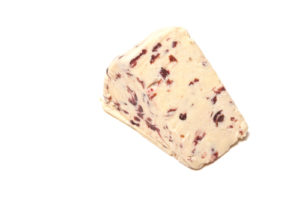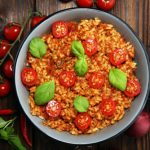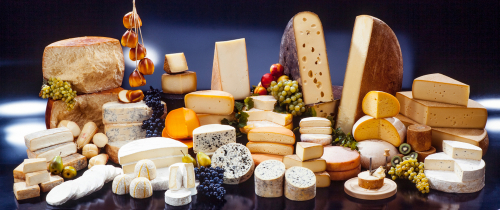
A Quick Guide to the Basic Types of Cheese
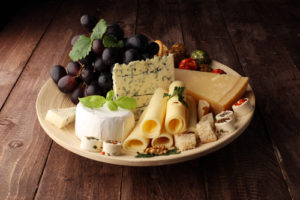
Making Cheese
In Monty Python’s 1979 classic film ‘The Life of Brian’, a parody on the Story of Jesus, there’s a scene where there is a crowd listening to Jesus speak. One of the film’s character’s; Gregory, asks what Jesus has just said? One of the spectators, answers saying; ”I think it was; Blessed are the cheesemakers”. As opposed to the biblical version of ”Blessed are the peacemakers”. Well, I certainly agree with the Python sentiment, from the softest fresh cheese to the strongest, most pungent blue cheese, I love them all!
Did you know that cheese has been with us long before the era of recorded history began? Some researchers think that the unpretentious foodstuff has been around for at least 4000 years. However, even historians cannot agree where cheesemaking originated, although most think it was probably in either Europe, Central Asia or the Middle East. Cheese can be made from the milk of any ruminating animal, including sheep, goats, buffalo, reindeer, camels and yaks. However, cow’s milk is by far the most popular source of cheese because of the sweetness and creamy flavour of the milk.
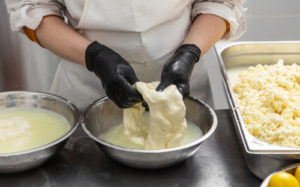
Making cheese is probably easier than you think!
Making cheese couldn’t be easier, as all you really need are three ingredients, which are; milk, salt and live microbial cultures, which includes rennet. It’s the different types of microbes when added to the milk that gives each variety of cheese its distinct flavour. Once rennet is added to milk, it immediately begins to curdle, which leads to the formation of whey. That process takes between 4 and 12 hours depending on the ambient temperature, i.e. the warmer the quicker. Next, simply drain off the whey and then pack the remaining curds together to form a semi-soft mass. Hey presto – you’ve got cheese!
There are literally thousands of different cheeses originating from many countries around the world. The UK has at least 700 varieties of cheese, while France, arguably the home of cheese, lays claim to having as many as 1600 cheeses. A cheese’s character, texture and flavour are dependent on the animal producing the milk and its diet, whether the milk’s pasteurised, the butterfat content, the bacteria and type of mould, the processing method, and the ageing process employed.
While there are countless varieties of cheese, they generally fall into one of seven basic groups. However, there is no universal system for categorising cheese, so many countries, especially in Europe, use their own method. These methods largely follow the same principle, which is based on the ageing process, and hence, the hardness and rind type of the cheese. Thus, cheese is normally categorised in, or something like, the following way:
Types of Cheese:
Blue Cheeses
Rind – rough, grainy, sticky
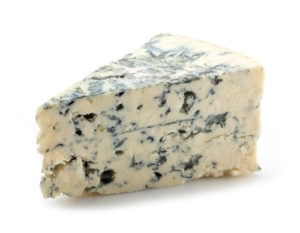
Blue cheese can be cow’s milk, sheep’s milk, or goat’s milk cheeses that have had cultures of the mould Penicillium added. The end product is spotted or veined throughout, with blue, blue-grey or blue-green mould. It carries a distinct taste and aroma, either from the mould or any specially cultivated bacteria that has been added.
Popular blue cheeses include: Stilton, Gorgonzola, Roquefort, Danish Blue
Hard Cheeses
Rind – greyish, crusty, polished, waxed/oiled
Hard cheese, or granular cheese, refers to a wide variety of cheeses produced by the repetitively stirring and draining of a mixture of curd and whey. They have a low moisture content, which means they take a relatively long time to mature and typically these cheeses have a strong flavour. Some hard cheeses undergo the ageing process for years.
Popular hard cheeses include: Beaufort, Manchego, Gruyere, Parmesan
Semi-hard Cheeses
Rind – yellow to orange, often waxed
Semi-hard cheeses are those family of cheeses whose curd is cut, gently heated, piled, and stirred before being pressed into forms. Semi-hard cheeses predominately get their flavour from two sources: the strain of bacteria introduced to the milk and the length of the ageing process.
Popular semi-hard cheeses include: Cheddar, Gouda, Edam, Emmental, Gruyere
Semi-soft Cheeses
Rind – grey-brown to orange, sticky
Semi-soft cheeses have a relatively high moisture content and generally have a blander flavour than harder cheeses. However, all semi-soft cheeses share a moderately short ageing period, typically a couple of months, which results in a moist, flexible, creamy product.
Popular semi-soft cheeses include: Havarti, Muenster, Jarlsberg, Chaumes
Soft Cheeses
Rind – White to light grey-blue rind)
Soft cheeses ripen from the outside towards their centre, so the inside is often runnier than the outside. The distinguishing characteristic of these creamy, plain cheeses is a thin white rind of blooming mould.
Popular soft cheeses include: Brie, Camembert, Cambozola
Fresh Cheese
No rind
Fresh cheeses are also sometimes referred to as unripened cheeses because they haven’t been aged at all. They are a soft, spreadable cheese with a creamy texture and mild flavour. Fresh cheeses are made from different types of milk and the amount of added salt can vary greatly, which help to give them distinct flavours.
Popular fresh cheeses include: cottage cheese, queso fresco, cream cheese, mascarpone and ricotta.
Flavoured Cheeses
Various types of rind
Flavoured cheeses are hard or semi-hard cheeses like Gouda, White Stilton, Wensleydale or Cheddar to which ingredients like nuts, fruit, herbs, etc. have been are added. These cheeses can be made with the flavourings been added to the mix right at the very beginning of the ageing process or they can be mixed with a young cheese in a blender then pressed into a “shape”. The former method tends to result in a much superior product. Flavoured cheeses are becoming increasingly popular.
Popular flavoured cheeses include: Gouda with Cumin, Lancashire with Chives, Wensleydale with Cranberries
Have you enjoyed reading this article? If so, why not look up some of our other food features and menus in our Food & Drink section, by clicking on the provided link.
